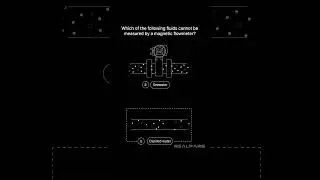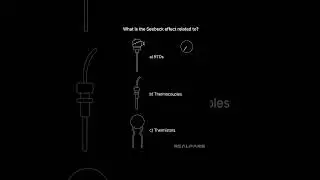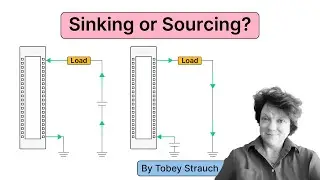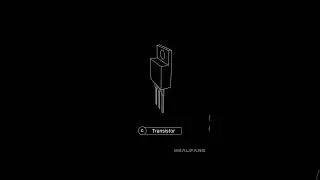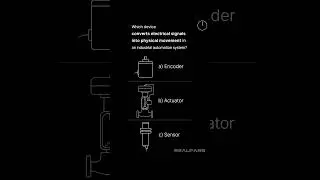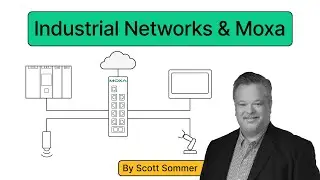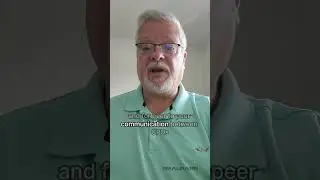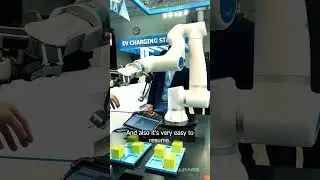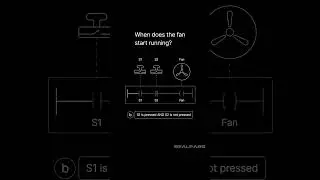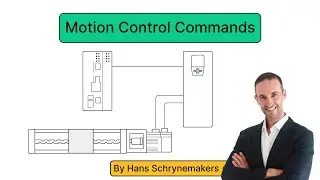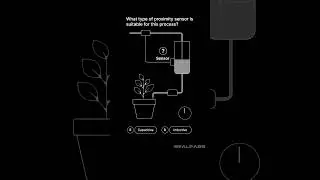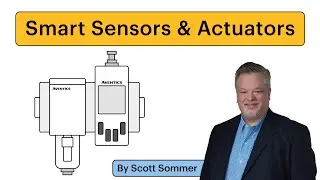Sinking and Sourcing: Which Connection Is Best for Your PLC?
▶ Want to learn industrial automation? Go here: http://realpars.com
▶ Want to train your team in industrial automation? Go here: http://realpars.com/business
▶ You can read the full post here:
https://www.realpars.com/blog/sinking...
⌚Timestamps:
00:00 - Intro
01:45 - Sinking Input/Output
02:16 - Sourcing Input/Output
02:44 - Design Considerations
04:23 - Conclusion
Powering a circuit requires a voltage source, a load, and a ground. Sinking and sourcing are ways of powering a circuit.
Sourcing provides the voltage source for a circuit. Sinking provides the necessary ground for a circuit.
The difference between sourcing and sinking is simply the direction of the flow of current.
If Device 1 is connected to Device 2 and the current flows from Device 1 to Device 2, then Device 1 is sourcing and Device 2 is sinking.
If we flip it and imagine the electrons flowing the other way, then we make Device 2 a source and Device 1 a sink.
Why does it matter? The direction of the current flow dictates whether you have a sourcing or sinking, but the actual devices chosen depend on wiring, terminal blocks, and the number of inputs and outputs that might share a common.
Also, your PLC card will be specified as either sink or source and must be wired accordingly. This is part of the thought process that design engineers take on when specifying components in a system design.
Sinking provides a path to the supply common.
Imagine we have a button connected to a PLC sinking input module. When the button is pressed and the contacts are made, the current flows from positive to negative as an input to the PLC. It's a positive signal input, and the supply common is negative. Therefore, it's considered sinking.
The sinking output module will have the current flowing into it from the load.
It uses NPN transistors for switching.
Sourcing provides a path to the supply source.
Imagine we have a button connected to a PLC sourcing input module. Compared to the sinking example, the change is in the common and button location. The input to the PLC is still a positive value.
The sourcing output module will have the current flowing out of it and into the load.
It uses PNP transistors for switching.
What does the instrument you are wiring to, require? Instruments may have PNP or NPN transistors in their circuits. “P” stands for positive and “N” stands for negative.
Positive and negative refer to the current polarity. This will determine what power sourcing needs to happen. Transistors as opposed to relays, rely on polarity.
Many proximity switches have PNP or NPN transistors today.
Good design habits require wiring all I/O points with the shared common to either source or sink.
This will save time, cabinet space, and terminal blocks.
If you wire the circuit as a block the common can be shared and supply more than one sensor.
Note that we have been discussing 3-wire sensor circuits and not AC-powered circuits.
AC changes polarity naturally. DC uses transistors. Do not use an AC power supply to source a DC source/sink point. Why? DC and AC do not match, and instruments will fault.
Along the lines of good practice, it's prevalent to see common as negative (-) as seen in the sinking examples. However, it's not about better, just more common.
Most modern PLCs allow the flexibility to wire NPN or PNP but may require doing so as a block, based on a shared “common”.
Checking out your PLC common wiring scheme is key if you are troubleshooting or adding to an input/output card.
For design, planning ahead will make sure cards, instruments, and commons match. Thus, matching the design to the application is more important than debating over whether PNP (sourcing) is better than NPN (sinking).
=============================
Sinking and Sourcing PLC Outputs Explained: https://www.realpars.com/blog/sinking...
PLC Fundamentals - Essentials for Control Systems: https://www.realpars.com/courses/plc-...
PLC Hardware Fundamentals - Power, I/O Modules & Signals: https://www.realpars.com/courses/plc-...
=============================
Did you miss out on the latest and greatest? Catch up now by watching our videos right here:
https://www.realpars.com/blog/node-re...
https://www.realpars.com/blog/transfo...
https://www.realpars.com/blog/motion-...
=============================
TWEET THIS VIDEO: https://ctt.ac/3e6b2
=============================
Follow us on Facebook 👉 / therealpars
Follow us on Twitter 👉 / realpars
Follow us on LinkedIn 👉 / realpars
Follow us on Instagram 👉 / realparsdotcom
#PLC #RealPars #automationengineering #PLCsetup
Watch video Sinking and Sourcing: Which Connection Is Best for Your PLC? online, duration hours minute second in high quality that is uploaded to the channel RealPars 12 August 2024. Share the link to the video on social media so that your subscribers and friends will also watch this video. This video clip has been viewed 15,550 times and liked it 551 visitors.








